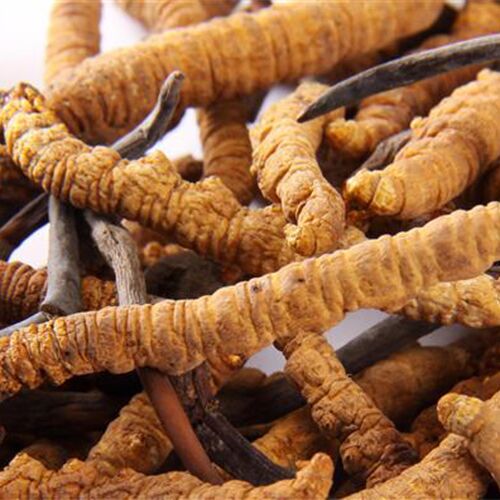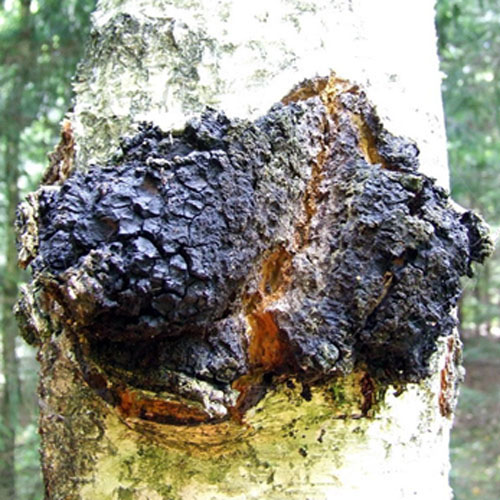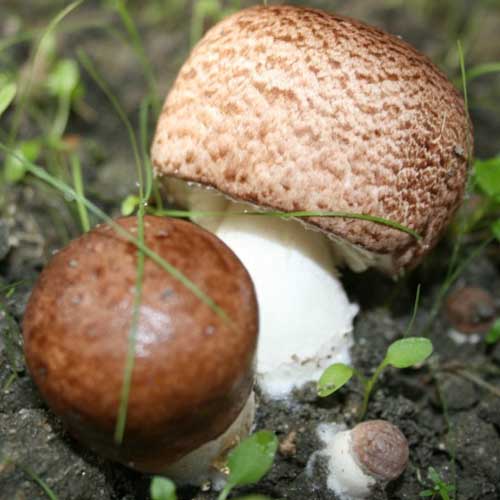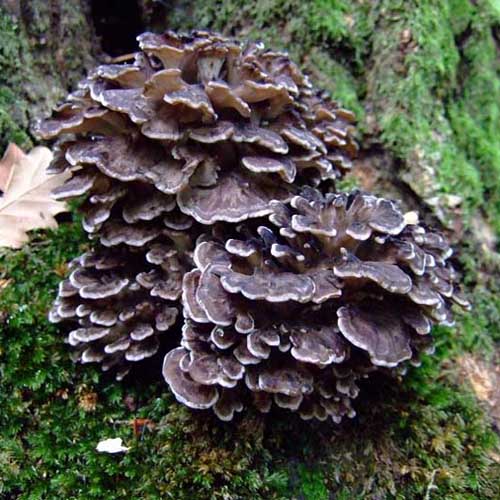- Chinese Name Dong Chong Xia Cao 冬虫夏草
- Latin Name Cordyceps sinensis (Berk) Sacc
- Other Names Chinese Caterpillar Fungus, Cordyceps Cs-4, “Winter worm, summer grass”, Ophiocordyceps sinensis,
- Used Part Fruit Bodies / CS-4
- Specification Powdered Extract; Polysaccharides
Cordyceps Mushroom Extract Powder
Description
Cordyceps is one of the absolute superstars of the Chinese tonic herbal system. It is an extremely effective and powerful life-enhancing agent, ranking right up there with Ginseng, Reishi and Deer Antler. Because it is rare, potent and highly treasured, like Deer Antler, it is very expensive. This rare and precious herb is considered to be a moderately Yang primal essence (Jing) tonic of the highest stature. It is a mushroom that consumes the body of a particular kind of caterpillar in mountainous regions of China, Mongolia and Tibet. It has enormous renown as a supersonic, and is said to build sexual and physical power, mental energy, the immune system and is universally believed in the Orient to prolong life.
Cordyceps is used to strengthen the body and mind at a fundamental level. It is said to be able to increase the “primary motive force for life activities.” Because it contains both Yin and Yang it can be used by anyone safely and over a long period of time. It replenishes Yin Jing, restoring the deep energy expended as a result of excessive exertion, adapting to stress or from aging. Cordyceps is thus one of the primary herbal substances used in tonic herbalism as an anti-aging agent and for the purposes of rejuvenation.
Cordyceps is very widely used for the purposes of strengthening the primal Kidney functions, which include sexual functions, brain power, structural integrity and healing ability. It is a very powerful Yang tonic. As a sexual tonic, Cordyceps is considered to be one of the best. It is not as quick acting as the best of the Yang tonics like Deer Antler, Epimedium and Sea Dragon, but it has a profound long range strengthening capacity. It is commonly used for impotence, sexual malaise, frigidity and infertility.
Consistent use of Cordyceps helps to strengthen the skeletal structure, and specifically benefits the lower back region, the knees and ankles. It is used for backache due to injury, fatigue, stress or simple aging.
Cordyceps is also a major Lung tonic. It can be used to strengthen respiratory power in those who require extra energy in order to perform physical work (e.g. labor, sports or exercise) or it can be used by those who suffer from deficiency of Lung power. It is especially beneficial to those who suffer chronic Lung weakness with cough, wheezing or shortness of breath.
Cordyceps is considered in Asia to be a powerful athlete’s tonic. It has no steroidal constituents, but greatly improves performance and muscle building capability.
Cordyceps is highly regarded in China as a tonic for those who are recovering from an illness or an operation, or after giving birth. In these cases, the Cordyceps helps the patient recover their physical power, to improve their appetite, and to protect the body from infection.
Many studies now indicate that Cordyceps can help the body resist a wide range of pathogenic bacteria, fungi and viruses. Cordyceps is used in Asia to help treat fungus and yeast infections, and intensive research is being conducted at dozens of institutions in China and Japan relating to the potential of Cordyceps to treat certain varieties of cancer.
Why Cordyceps CS-4:
While for all our mushroom extracts we insist on using fruiting bodies, there is an except for Cordyceps.
Wild Cordyceps sinensis is quite rare and thus extremely expensive in China nowadays. It consists of a caterpillar and a blade-like mushroom body growing from one end. Its common Chinese name is “Winter worm, summer grass”. Due to the high cost of this herb, the Chinese developed the mycelium of this mushroom and now grow it in liquid fermentation tanks. This pure mycelium product is known as Cs-4.
A large body of research has demonstrated that Cs-4 has a similar profile of active compounds and activities as wild Cordyceps. And years of compositional analysis as well as clinical trials demonstrated that Cs-4 acted in a manner consistent with the wildcrafted Cordyceps.
The Cultivation Process for Cordyceps CS-4 (liquid culture cultivation):
First, take an enclosed stainless steel tank (also known as a bio-reactor), get it half filled with water and added nutrients, usually a mixture of various grains. This mixture is cooked for a period of time, usually 3-4 hours, until a nutritious broth is created.
This medium is then sterilized and allowed to cool, at which point a piece of living Cordyceps Cs-4 mycelium is added to the tank. As long as the medium is sterile, the broth is stirred or agitated, and the CO 2 is vented out, the mycelium grows through the liquid broth.
It takes 48-72 hours for the mycelium to completely grow through and consume all the nutrients in the tank, at which point the mycelium is filtered out, dried and then extracted, like any other dried and ground up mushroom powder.
Cordyceps CS-4 actually means the 4th strain of Cordyceps mycelium. There were many strains of Cordyceps mycelium were researched, scientists finally found out only the 4th strain of Cordyceps mycelium could be grown using submerged/liquid cultivation methods, and would produce effective levels of all the active compounds found in the wild Cordyceps fruit bodies, including the secondary metabolites.
TCM Tradition
Taste & Property Sweet, Warm
Organ Meridians Lung, Kidney
TCM Functions
• Tonifies the Kidneys, strengthens Yang and augments Jing
– Kidney Yang Deficiency with impotence, and sore and weak lower back and lower extremities
– Kidney Jing Deficiency
– Kidney Yin Deficiency
• Nourishes Lung Yin, transforms Phlegm and stops bleeding
– Lung Yin Deficiency with chronic cough and wheezing
– Consumptive coughs with Blood-streaked sputum
– Asthma due to Kidney and Lung Deficiencies
Science Research
Chemical Constituents
Major chemical constituents in Cordyceps include nucleosides such as adenosine, adenine, hypoxanthicine nucleoside, uracil, thymine, uridine, guanidine, thymidine, 3′-deoxyadenosine (also called cordycepin); sterides such as ergosterol peroxide, cholesteryl palmitate, eogosterol; polysaccharides such as galactomannan; alkanols such as D-mannitol (also called cordycepic acid). It also contains a large quantity of crude proteins, essential amino acids, multiple trace elements and some vitamins.
Pharmacological Actions
1. Anti-oxidant effects
In vitro study
Antioxidant activities of water and alcoholic extracts of both natural and cultured Cordyceps sinesis were tested through six different antioxidant assays: inhibition ability of linoleic acid oxidation, scavenging activity of 1,1-Diphenyl-2-picrylhydrazyl (DPPH), hydrogen peroxide, hydroxyl radical and superoxide anion and metal chelating activity. Although these samples of Cordyceps sinensis showed different antioxidant ability, both natural Cordyceps sinensis and its fermentation preparations could be used as potential natural antioxidants [1]. Another study showed that the polyphenolic and flavonoid contents in Cordyceps sinensis might be responsible for its antioxidant activities. On the basis of these results, the protective effects of Cordyceps sinensis against oxidative damage are due to its free radical scavenging abilities [2].
2. Anti-inflammatory effects
In vitro studies
Chloroform and n-butanol fractions of the methanol extract from Cordyceps sinensis significantly blocked the cytokine, TNF-alpha, and IL-12 secretion in LPS/IFN-γ stimulated macrophage cells through reducing inducible NO synthase expression [3].
3. Anti-tumor effects
In vitro studies
The anti-tumor effects of the methanol extract of Cordyceps sinensis was studied in different types of cancer cell lines: lymphocytic (Jurkat), hepatoma (HepG2), prostate (PC 3), colonic (Colon 205) and breast (MCF 7). The n-butanol fraction of the methanol extract of Cordyceps sinensis possessed anti-proliferation effects on the Jurkat, PC 3 and MCF 7 cell lines [3].
Another in vitro study evaluated the inhibiting effect of Cordyceps extract on the proliferation of colon cancer cells (HT-29 and SW480). Cordyceps extract could inhibit the proliferation of colon cancer cells through inhibiting the degradation of l-kappa B alpha in the cell and inhibiting the activation of NF-kappaB [4].
4. Anti-fatigue and anti-stress effects
In vivo study
The hot water fraction of cultured Cordyceps sinensis has anti-fatigue and anti-stress effects in the stimulus-induced fatigue and stress ICR mice and Sprague-Dawley rats [5].
5. Effects on respiratory system
In vivo study
The effects of methanolic extract of Cordyceps sinensis on bronchoalveolar lavage fluids (BALF) cell proliferation, inflammatory cytokines production and genes expression have been evaluated. The alcoholic extract dose dependently suppressed BALF cells proliferation activated by lipopolysaccharide (LPS). It also inhibited IL-1beta, IL-6, IL-8, IL-10 and TNF-alpha production in the activated BALF cell cultures [6].
6. Effects on lung fibrosis
In vivo study
The effect of Cordyceps sinensis on liver fibrosis was studied in the dimethylnitrosamine-induced liver fibrosis Sprague-Dawley rats. Cordyceps sinensis can considerably relieve liver fibrosis by promoting the degradation of collagens such as Hyproxyproline, tissue inhibitor of metalloproteinase-2, type IV collagen and type I collagen [7].
7. Effect on lung fibrosis
Clinical study
A study was carried out involving 16 convalescing SARS patients (4 males and 12 females) who were given Cordyceps sinensis alone. The other 15 convalescing SARS patients who were under Western medical care serve as the controls. The average age of the patients in the Cordyceps sinensis group is 34.3 years old. Daily dose of Cordyceps sinensis was 3 grams. The treatment effects were monitored by High Resolution Computerized Tomography (HRCT) and serum soluble Interleukin-2 Receptor (sIL-2R). Patients on Cordyceps sinensis which that showed a significant improvement in pulmonary fibrosis and lowering of sIL-2R, whereas controls did not [8].
8. Immunomodulatory effects
In vivo study
The immunomodulatory activity of polysaccharides extracted from cultured Cordyceps sinensis was investigated in human peripheral blood. Results found that the extract was capable of inducing the production of tumor necrosis factor alpha (TNF-alpha), interleukin (IL)-6, and IL-10 dose-dependently [9].
Toxicology
Cordyceps has an extremely low level of toxicity. Mice have been shown to tolerate up to 45g/kg of Cordyceps, which is approximately 250 times the therapeutic dosage for humans. The LD50 in mice via intraperitoneal injection is 21.7±1.3 g/kg [10].
Reference
1. Gu YX, et al. Antioxidant activity of natural and cultural Cordyceps sp. Zhongguo Zhong Yao Za Zhi; 32: 1028-1031. (2007)
2. Hui MY, et al. Comparison of protective effects between cultured Cordyceps militaris and natural Cordyceps sinensis against oxidative damage. Journal of Agricultural and Food Chemistry. 54: 3132-3138. (2006)
3. Tzeng YM, et al. Evaluation of the anti-inflammatory and anti-proliferation tumoral cells activities of Antrodia camphotata, Cordyceps sinensis, and Cinnamomum osmophlpeum bark extracts. Journal of Ethnopharmacology. In press. (2007)
4. Huang H, et al. Inhibitory effects of cordyceps extract on growth of colon cancer cells. Zhong Yao Cai; 30: 310-313. (2007)
5. Suh HJ, et al. Antifatigue and antistress effect of the hot-water fraction from mycelia of Cordyceps sinensis. Biological and Pharmaceutical Bulletin; 26: 691-694. (2003)
6. Kuo YC, et al. Regulation of bronchoalveolar lavage fluids cell function by the immunomodulatory agents from Cordyceps sinensis. Life Science; 68: 1067-1082. (2001)
7. Li FH, et al. Effects of Cordyceps sinensis on dimethylnitrosamine-induced liver fibrosis in rats. Zhong Xi Yi Jie He Xue Bao; 4: 514-517. (2006)
8. Hui PK, et al. Cordyceps sinensis improved post-SARS pulmonary fibrosis. Hua Xia Yi Yao; 3: 172-176. (2006)
9. Kuo MC, et al. Immunomodulatory effect of exo-polysaccharides from submerged cultured Cordyceps sinensis: enhancement of cytokine synthesis, CD11b expression, and phagocytosis. Applied Microbiology and Biotechnology; 75:769-775. (2007)
10. Chen J, Chen T, ed. Chinese Medical Herbology and Pharmacology. Art of Medicine Press, 2004; 883-885.





